

Deep Dive: Molecular magic
Bringing bright ideas from the labs to our plates, precision fermentation has the potential to pave the way to a sustainable food future. But, examines Louise Davis, can the technology be scaled up quickly, cost-effectively, and successfully enough to live up to the hype?
Precision fermentation lies at the intersection of the traditional (fermentation) and the new (highly advanced biotech solutions). When applied to food, it enables the production of proteins that are identical to animal-based ones without ever going near a living being. And if deployed successfully, it can produce proteins in controlled environments that aren’t subject to environmental fluctuations, with a smaller carbon footprint than traditional food production, and at a scale that could transform how the world eats.
The draw is huge, but naturally there are some obstacles in the way of precision fermentation reaching its potential, with scale being the primary hurdle. Costly bioreactors that are too small for purpose aren’t going to start churning out microorganism-based foods at any significant rate. However, several players are already starting to crack the challenge.
Process optimization techniques are critical, too, with modeling tools and other software-based approaches that positively impact the hardware side of operations being key for moving from pilot scale to commercial production.
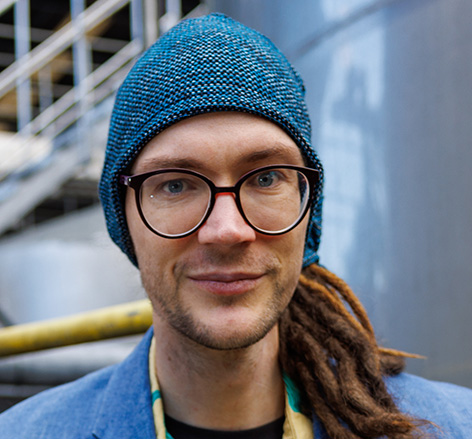
Think factory, not lab
A piece of advice for biotech startups in this field comes from Jacob Manning, the CEO of Exocule, who stresses the need to think like a food company. “The challenge lies in the transition from a small-scale, lab-like environment to a large-scale, economically viable production facility,” he says. “Traditional approaches have relied heavily on expensive bioreactors and maintaining stringent lab-like conditions, which are not sustainable or cost-effective at a larger scale. This is a critical issue, as the economics of alternative protein production – much like commodities such as traditional meat and milk – demand a model that prioritizes cost of goods sold (COGs) over laboratory precision.
“Our approach addresses this scalability challenge,” adds Manning. “We recognize that as alternative protein production scales up, it needs to operate more like a food company, focusing on efficiency and cost-effectiveness rather than a high-cost science or technology venture. We advocate a shift from traditional bioreactors to smart, lightweight ‘biofermenters’, designed to be more economical and easier to scale, offering a practical solution to the technoeconomic challenges of large-scale precision fermentation.”
Offering an example of the results such biofermenters can deliver, Manning cites the production of casein. “The market dominance in such a scenario will not necessarily
go to the first producer but the one that offers the most affordable product. Companies using traditional scientific research vessels for production are likely to find their economic models unsustainable as they scale up. In contrast, in the future, intelligent biofermenters will be the dominant use case for economically viable production, offering lower per-kilo prices for their products.”
Exocule has positioned itself as ‘the world’s first precision fermentation intelligence platform’. “Imagine having a highly intelligent assistant living in your tank that constantly oversees your processes,” Manning details. “This assistant is equipped with special tools (our bespoke sensors) that can understand at a granular level the health and behavior of specially designed microorganisms – the tiny powerhouses responsible for producing targeted proteins, enzymes, and other compounds through precision fermentation.
“Just like a doctor uses sophisticated instruments to monitor a patient’s health, our sensors keep a vigilant eye on the fermentation process. They ensure that the novel microorganisms are performing optimally, precisely turning inputs into the desired outputs.”
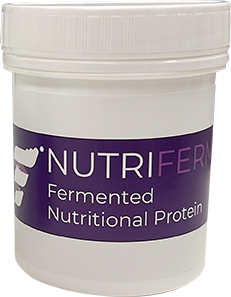
Thanks to machine learning, Manning’s ‘assistant’ doesn’t just monitor; it learns and gets smarter over time, predicting issues, suggesting improvements, and even automating parts of the process. He says this leads to higher quality, volume, and purity of the desired products, whether they are novel proteins, enzymes, or other compounds, which enhances both operational efficiency and profitability.
“And the best part? All of this sophisticated analysis and data is presented in a simple, easy-to-read format on a dashboard,” Manning says. “This means you can make quick, informed decisions about your processes without needing to be a tech expert. It not just monitoring; it’s about mastering the art and science of precision fermentation, pushing the boundaries of what’s possible in biotechnology.”
When applying his tools, companies venturing into the production of alternative proteins through precision fermentation can expect “transformative results”, believes Manning. “They can move away from the expensive and rigid control systems of bioreactors and benefit from a powerful, real-time data feed that provides early alerts, warnings, predictions, and optimization potential.
“This approach allows for a broader and more efficient monitoring of the culture, optimizing environmental factors and resources in real-time. It continuously adjusts according to the ‘nine Exocule pillars of biological health’, ensuring consistent and continuous expression of the target molecule.
Citing one example of impressive real-world results, Manning says one of his customers was spending AU$4 million (US$ 2.6 million) a quarter just on electricity to maintain traditional bioreactors. “By switching to our system, they can expect considerable cost savings along with improved operational efficiency. This is also beneficial for the planet, so aligns with sustainable practices.”
Solid-state solutions
A huge sustainability win is in deploying technologies that co-opt waste from other industries and turn it into food. Doing this in the precision fermentation sector is Andy Clayton, a biologist who is also CEO & Founder of Fermtech. “We use solid-state fermentation (SSF),” he begins. “This differs from liquid tank fermentation in that the organism grows on a solid substate rather than in a liquid tank. An advantage is that we use spent grains from breweries – a waste material – as our substate. This keeps costs low and means our product has almost no carbon footprint.”
In terms of the microorganisms used in the fermentation process, Clayton uses filamentous fungi, which are commonly used in food manufacture. “Our organisms naturally have a very high yield of protein,” he says. “They’re also quite low-maintenance organisms, and have reasonable tolerances in terms of the environment they grow well in.”
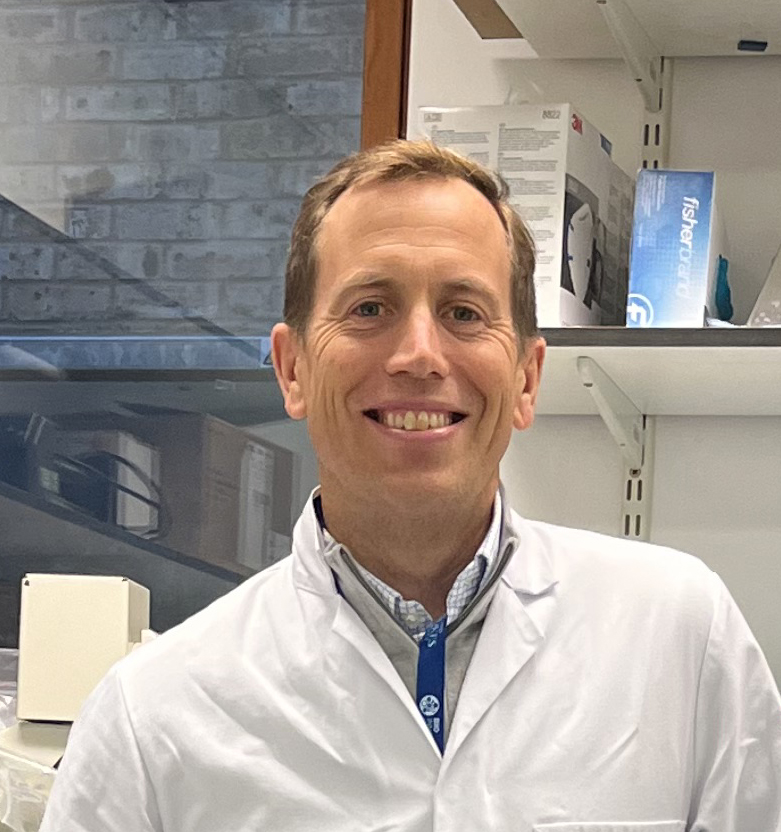
So, how does Clayton optimize the fermentation conditions – such as temperature, pH, and oxygen levels – that determine successful output here? “We have
created our own bioreactors,” he says. Interestingly, given the pain point of costly bioreactors, Clayton notes that his equipment is ultra-low cost. “A large proportion of the cost of producing protein in liquid tanks comes from the CapEx on the production facility. SSF reduces this considerably. Our bioreactors are, essentially, plastic trays.”
The process is also incredibly high yielding, according to Clayton. “We believe we have the most efficient system in the world for producing animal-equivalent protein for human consumption, both in terms of cost, yield, and carbon footprint,” he says confidently.
Fermtech is applying its tech to produce protein as an ingredient for food companies, and it’s currently being tested in products such as vegan cheese, ice cream, baked goods, protein shakes, and bars. “Essentially it’s any plant-based product that requires protein,” he says. “We have optimized the system to create protein that is largely functional and tastes neutral, so that food manufacturers can benefit from an affordable protein source that does not disrupt their product.”
Fermtech’s lab is producing hundreds of grams of samples a week and is seeking funding to move to pilot scale. “Our process is highly scalable, and our product can be sold for below parity with animal protein products,” Clayton states.
Budget bioreactors
The Israeli company, Ingrediome, has a similar mission to Fermtech and is also aiming to achieve it via the deployment of ultra-low-cost bioreactors. “We are creating the world’s first hybrid meat using recombinant nature-identical meat proteins,” reveals Aviel Even, CEO. “Our photosynthetic precision fermentation process utilizes blue-green algae with traditional farming methods to produce animal proteins in a sustainable method that is CO2-negative and brings about cost parity with traditional meat products.”
Even says that after having mapped the culinary function of the meat proteome, his team “focuses on producing the key proteins for meat”. Ingrediome is working on a first line of deli meat products “with identical culinary properties and a similar nutritional profile compared with traditional meat”. According to Even, his product boasts 10 times the meat proteins found in cultured meat while requiring fewer environmental and financial resources than plant-based alternatives. “Furthermore,” he adds, “the product contains 70% nature-identical proteins, offering lower saturated fats and no cholesterol, compared with traditional meat.
“Also, unlike plant-based alternatives, our products do not contain the modified starches, gums, and textured-vegetable proteins that are often avoided by consumers.”
Discussing where his technology sits within the precision fermentation sphere, Even explains that Ingrediome is using the tech to create ‘natural-identical’ animal proteins. “But instead of using CapEx-heavy steel tank bioreactors, we use reusable plastic photobioreactors that are compatible with algae cultivation,” he says.
A significant proportion of the cost of producing protein in liquid tanks comes from the CAPEX on the production facility. SSF reduces this considerably
“Our feedstock is sunlight, CO2, and industrial fertilizer, which allows algae (but no other bacteria) to thrive. Therefore, the conditions that must be met to keep the sterility of the bioreactors are simplified. This enables us to employ outdoor cultivation in those relatively simple plastic photobioreactors, with a CapEx that is measured in millions and not tens or hundreds of millions, and with a lead time of months and not years.”

The technology stems from the process of genetic engineering of the algae, combined with the discovery of how to regain their structure and function as found in meat. Even says this approach will deftly tackle any issues associated with scalability. “The low cost of the bioreactors and industrial supportive equipment, coupled with a simple operation, allows rapid scaling. The photobioreactors are also built out of repetitive units of approximately 50,000 liters, therefore scaling up means just building more of these blocks and is predictable,” he points out.
Even’s plan now is to spend the next two years finalizing the process and completing the firm’s FDA application. “We’ll spend 2024 working on the completion of our lab process. We will come out with five key meat proteins produced in our algae and produce our first minimum viable products in the deli meat and seafood spaces.”
New wave band
With a tagline of ‘revolutionizing bioprocess design’ and calling itself New Wave Biotech, it’s perhaps unsurprising that this bioprocess optimization software company has embraced a punk ethos. Its offering is pretty much the definition of a disruptive technology: software that runs virtual experiments that would take vast amounts of time and money to conduct in the real world. The implications for how this could shorten time-to-market are evident.
Oli Hall, Co-Founder & CTO of the UK company, succinctly describes the motivation behind this work by saying that, “Synthetic biology (SynBio) technologies, such as precision fermentation, can transform the taste, texture and nutritional value of alternative proteins to support its mass adoption. However, right now 90% of these SynBio products fail to scale viably. This is because R&D is too expensive and slow – typically it takes three to 10 years to get from lab to market, with experiments costing up to US$100,000 each, and companies run out of money before they’re viable, let alone optimal.
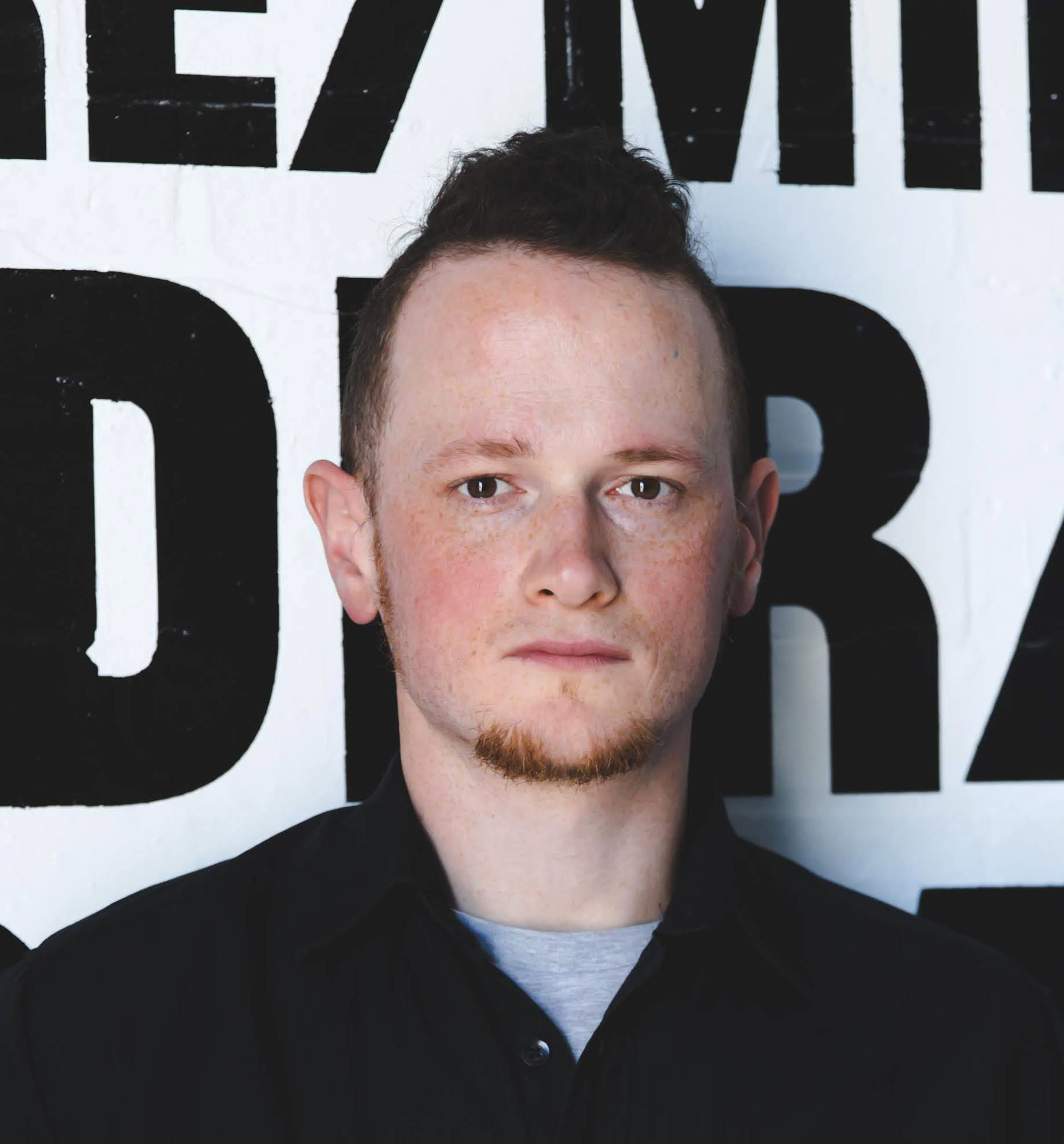
“That’s where we come in,” Hall notes. “We develop bioprocess optimization software to empower SynBio innovators to get to market quicker, better, and at lower
cost. Our software works by experimenting, virtually, on thousands of processes, learning from real-life data and recommending improvements. This creates a step-change in how SynBio R&D is done, taking it from a slow, iterative process to a rapid one led by data and insights.
“This helps companies reduce risk by eliminating unviable processes from the start, accelerating R&D and reducing costs by focusing experiments on high-potential processes, as well as improving R&D strategy with techno-economic insights and scenario planning, and ultimately reducing costs with optimized processes.”
Considering how companies without such tools currently conduct these type of activities, it’s easy to see why New Wave Bio’s proposition is so attractive. Hall describes the current set-up of most firms as “quite a traditional space”, centered around physical experiments and manual modeling.
“Typically companies hire bioprocess engineers who design an initial process based on experience, conduct research in the area, manually model output and costs, conduct experiments, and then iterate based on results,” Hall says. “As a single experiment costs US$10,000-US$100,000, with bookings needed three to six months in advance – and a typical process change requiring 1,000 hours of testing – system design and optimization is a painfully slow and expensive process, with very little margin for error before the money runs out.”
Hall also observes that, because the R&D process is heavily reliant on experience over tools, “companies are highly constrained by the huge skills shortage in the bioprocess engineering space, and face major risks when experienced engineers leave or retire”.
So, what sort of results can a company looking to produce alt proteins via precision fermentation achieve by applying New Wave Bio’s tools? “Finding the best bioprocess can make the difference between success and failure in the alt protein market, with process choice having major implications on product strategy, R&D strategy, operational efficiency, product quality and unit economics,” Hall states. “With our software, customers can virtually experiment with thousands of process options to understand the holistic implications of their design decisions, quantifying potential impact on CapEx, OpEx, product quality, and sustainability for better decision making. We can give people a compass to navigate these difficult technical and strategic decisions.”
By using this technology, Hall says companies can get a better understanding of product economics, can attract investment, and can compare the profitability of different product targets. “They can also compare downstream processing (DSP) options at each stage of their scaling journey and optimize their DSP to improve factors such as profitability, operational efficiency, and sustainability,” Hall adds. “Last but not least, they can understand the scalability of their process and optimize it for production.”
Dairy delivery
One company that has successfully tackled the scale challenges in precision fermentation and already achieved food-grade production is Dutch animal-free dairy firm, Vivici. “We start with the end in mind,” says CEO Stephan van Sint Fiet, when asked to offer an overview of its processes. “We start with dairy proteins – the ideal ingredient provided by nature – to formulate nutritious and delicious food and beverage products. We teach microorganisms to make these specific dairy proteins, and through a fermentation process with all the right nutrients and conditions, we use these microorganisms to produce the dairy protein. We then harvest the dairy protein by separating the protein from the microorganism and nutrients.”
We can take great proteins found in nature and improve upon them, ‘tailoring’ them toward specific food applications or consumer preference
The company uses different microorganisms, based on what it is trying to produce. “We produce our current dairy protein, beta-lactoglobulin, in yeast,” van Sint Fiet says.
When asked about the important factors that influence the yield and efficiency of its fermentation process, van Sint Fiet cites strain titer, fermentation time, and downstream processing yield as the key levers.
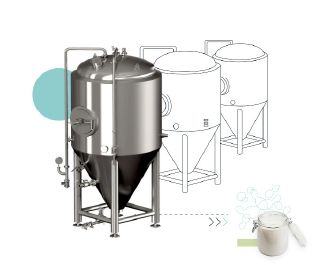
And in terms of ingredient customization, van Sint Fiet says that to begin with, the team’s focus is on creating proteins with a great nutritional profile and a neutral taste (“in our case, nature-equivalent dairy proteins”). Then they work closely with customers to formulate products that have better sensory profiles. “For example, our protein is ideal to improve the taste and texture of plant-based meat analogs or the nutritional profile of plant-based milk.”
The flexibility of the technology is a superb selling point, notes van Sint Fiet. “This is one of the big advantages of precision fermentation. We can take great proteins found in nature and improve upon them, ‘tailoring’ them toward specific food applications or consumer preference.”
Vivici has announced that in 2024 it will start selling its beta-lactoglobulin product to food and beverage companies and van Sint Fiet reports a positive response to this news. “We enter the industry as a credible ingredients supplier, which is what food and beverage companies are looking for when innovating and bringing new products to consumers. We are working with customers now on their formulations, ahead of having self-affirmed GRAS in early 2024. You can expect to see Vivici beta-lactoglobulin in a range of products where nutrition, taste and texture, and animal welfare or environmental concerns are desired.”
Future focus
Looking further ahead than 2024 to 2040, the final words have to go to Jacob Manning at Exocule. “The future of precision fermentation is poised to feature large biofermenters with minimal control systems, designed for optimal energy efficiency,” he predicts. “These systems will leverage the natural biological capabilities of yeast, maintaining them in an optimal state for the most efficient production. This approach is set to revolutionize the economics of food production, making it more accessible and sustainable.
“In this utopian future,” Manning adds, “precision fermentation extends its influence beyond food production to sectors such as textiles and advanced building materials. Every producer – whether they are in food or indeed other industries – will incorporate it into their processes, easily managed at their local site with consistent yields and minimal technological needs. This widespread adoption of precision fermentation will become a cornerstone in creating a sustainable, efficient, and equitable society.”
If you have any questions or would like to get in touch with us, please email info@futureofproteinproduction.com







